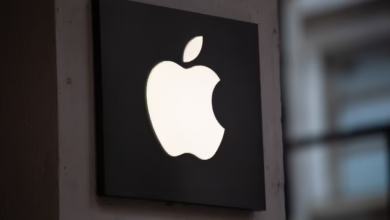AI Showdown: GPT-5, Claude, and Gemini’s Surprising Real-World Test Results

▼ Summary
– Current AI tools have shown inconsistent workplace productivity results, with many enterprise projects failing and sometimes creating additional work instead of reducing it.
– OpenAI introduced GDPval, a new evaluation method that measures AI performance on 1,320 real-world tasks from 44 occupations across major US industries.
– The evaluation found that top AI models like Claude Opus 4.1 and GPT-5 are approaching human expert quality on specific tasks, with performance improving rapidly between recent model generations.
– While AI models can complete tasks roughly 100 times faster and cheaper than humans, these metrics don’t account for the human oversight and iteration needed in actual workplace settings.
– OpenAI acknowledges GDPval has limitations as it can’t capture the full nuance of real work, including handling ambiguity, multiple iterations, or tasks requiring extensive prior context.
The promise of artificial intelligence to revolutionize workplace productivity continues to face a reality check. While the market is saturated with tools claiming to automate complex tasks, the actual results have often fallen short of expectations. A recent MIT report highlighted that a staggering 95% of enterprise AI projects have failed, and many managers report receiving subpar “workslop” from AI that requires more human correction than it saves. In response to this gap between hype and performance, OpenAI has introduced a new evaluation framework called GDPval, designed to measure how AI performs on real-world, economically valuable tasks.
Unlike traditional benchmarks that can be overly academic, GDPval focuses on practical applications. It assesses models against 1,320 tasks linked to 44 occupations, primarily in knowledge work sectors. These professions were selected from the top nine industries that each contribute more than 5% to the US gross domestic product. Using data from the US Bureau of Labor Statistics and the O*NET database, the evaluation covers expected roles like software engineers and lawyers, but also extends to less common targets for automation, such as detectives, pharmacists, and social workers. The tasks themselves were crafted by professionals averaging 14 years of experience to ensure they reflect genuine work products like legal briefs, engineering blueprints, and nursing care plans.
A key differentiator for GDPval is its methodology. Instead of relying on simple text prompts, the evaluation provides models with files to reference and demands multimodal deliverables, including slides and documents. This approach aims to simulate the actual expectations users would have in a professional environment. “This realism makes GDPval a more realistic test of how models might support professionals,” OpenAI stated.
In its initial tests, OpenAI had experienced professionals blindly grade outputs from several leading models, including its own GPT-4o, o4-mini, o3, and GPT-5, alongside competitors like Anthropic’s Claude Opus 4.1, Google’s Gemini 2.5 Pro, and xAI’s Grok 4. These were compared against work produced by humans. The results revealed that Claude Opus 4.1 emerged as the top-performing model, particularly excelling in aesthetics such as document formatting and slide layout. Meanwhile, GPT-5 stood out for its accuracy in handling domain-specific knowledge. The research also indicated a dramatic improvement in capabilities, with performance more than doubling from GPT-4o to GPT-5 in just over a year.
The economic argument for AI remains powerful. OpenAI found that frontier models could complete GDPval tasks approximately 100 times faster and 100 times cheaper than industry experts. However, the company was quick to add a significant caveat: these figures represent pure model inference time and API costs. They do not account for the essential human oversight, iteration, and integration steps required to use these models effectively in real workplace settings.
OpenAI openly acknowledges the limitations of GDPval, calling it an “early step.” The evaluation currently conducts one-off assessments and cannot measure a model’s ability to handle multiple drafts, incorporate ongoing feedback, or manage tasks with deep contextual dependencies. Real-world work often involves ambiguity, exploration through conversation, and adapting to shifting circumstances, elements that GDPval does not yet capture. “Most jobs are more than just a collection of tasks that can be written down,” the company noted. Future iterations plan to address these gaps by including more industries and harder-to-automate tasks involving interactive workflows.
Looking ahead, OpenAI’s conclusion echoes a familiar narrative: AI will continue to disrupt the job market. The company suggests that on tasks where models prove strong, delegating work to AI first could save significant time and money. Despite the competitive performance of models compared to human experts, OpenAI reiterates its commitment to democratizing access to AI tools, supporting workers through transitions, and building systems that reward broad contribution. The stated goal is to keep everyone on the “up elevator” of AI, an optimistic vision that assumes a universally positive experience, contrary to some recent surveys indicating mixed reactions in the workforce.
(Source: ZDNET)





